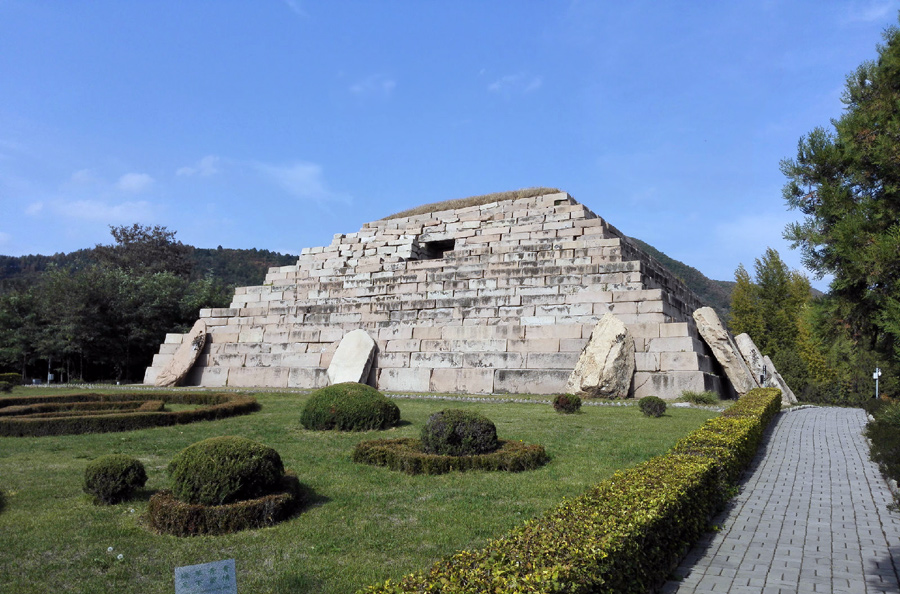 |
|
[Photo/whcn.org] |
Category of site: Cultural site
Brief introduction
Mostly located in Jinlin and Liaoning provinces in northeast China, the site includes archaeological remains of three fortress-cities and 40 identified tombs Koguryo imperial and noble families: Wunu Mountain City, Guonei City and Wandu Mountain City, 14 tombs are imperial, 26 of nobles.
The Koguryo kingdom was a regional power and ethnic group from the year 37 BC until the kingdom moved its capital to Pyonyang in AD 427. Wunu Mountain City, Guonei City and Wandu Mountain City served as capitals of Koguryo during the early and middle period of the kingdom.
The tombs of kings and nobles of the ancient Koguryo Kingdom are distributed in the Donggou Ancient Tombs Area of Wandu Mountain City. The capital cities and tombs are an exceptional testimony to the vanished Koguryo civilization. The layout and construction of the capital cities influenced the city planning and building of later cultures. The tomb paintings represent a rare artistic expression in medieval Northeast Asia and together with the stele and inscriptions showing the impact of Chinese culture on the Koguryo.
The tombs are the carriers of Koguryo culture, and the Koguryo Kingdom was added onto the World Cultural Heritage List in 2004.
Cultural heritage
Wunu Mountain City was built in 37 BC as the first capital of the Koguryo regime. Surrounded by a defensive wall with three gates which was partly built with stone and in other places exploited the cliff face, the city included a palace, military camp, watch tower, houses and warehouses.
Guonei City, now surrounded by the city of Ji’an, was built on the plain with a stone-built defensive wall and had separate palace and residential zones.
Wandu Mountain City, the only Koguryo mountain city capital whose general layout was planned with the large palace as its core, created a mountain city that perfectly combined the Koguryo culture with the natural environment.
Guonei City and Wandu Mountain City were the economic, political and cultural centers of the Koguryo for hundreds of years. Guonei City was destroyed in the year 197 when the Koguryo were defeated by another power. Wandu Mountain City was built in 209. Both cities were damaged in wars and rebuilt several times, serving alternately as the capital. Guonei City played the role of a supporting capital after the main Koguryo capital moved to Pyongyang. It is one of the few plains city sites with stone city walls still standing.
The 12 imperial tombs take a stepped pyramid form constructed of stone. The burial chambers within were roofed with clay tiles. The tombs of the nobles have stone chambers covered with earth mounds and are decorated with wall paintings, depicting scenes of daily life, sports, hunting, nature, gods, fairies, and dragons. The stele of King Haotaiwang, dating from 414, tells the story of the founding of the Koguryo Kingdom.
The Capital Cities of the Koguryo Kingdom are an early example of mountain cities, later imitated by neighboring cultures. The tombs, particularly the important stele and a long inscription in one of the tombs, show the impact of Chinese culture on the Koguryo (who did not develop their own writing). The paintings in the tombs, while showing artistic skills and specific style, are also an example of having strong impact from other cultures.